Instruction
As Tiger Woods says, “explosive power starts from the ground up”
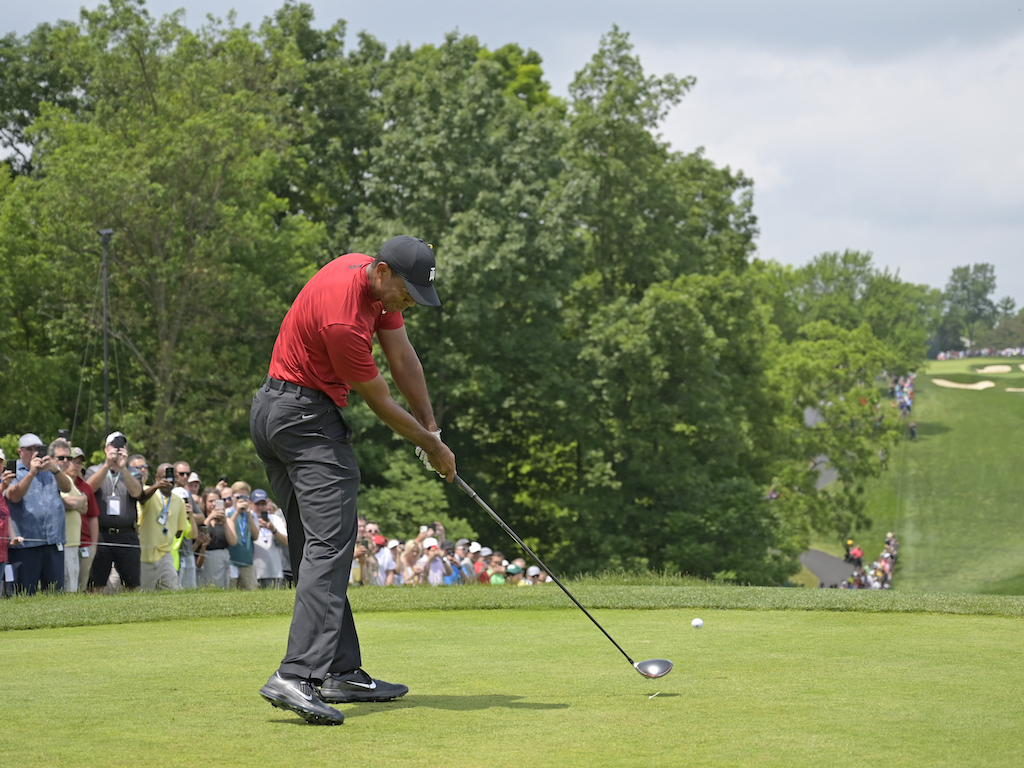
“You can’t start a car from a dead start and put it immediately up to 70 miles per hour. No matter how powerful your engine, you must have a gradual acceleration of speed. So it is in the golf swing.” — Mickey Wright
“Explosive power starts from the ground up..flat-out, lower body initiated power…my legs and hips drive forward and my upper body simply unwinds.” –Tiger Woods
We all have a love of power and yearn to achieve more of it in the golf swing. Muscular power is the rate of energy expended and it depends on the amount of energy available and the time taken to expend it. This is really about the amount of weight moved and the time involved to move it. Why is this relevant to the golf swing? Simply put, you have permission to move when making a full swing motion!
The modern swing seems to be all about rotation (torque, twist, turn, X-factor, etc.) are swing buzz words that are understood as the answer to a powerful swing and thus, increased distance. I believe these things can create substantial power, but done alone, could they be creating the possibility for injury. It seems to me that the more that I understand about anatomy, the more I believe that the body is not designed for the said rotational activity by itself in the golf swing. However, if there is some lateral movement allowed, this alone could put less stress on the back and joints, freeing up the shoulders to turn. Thus, shifting and turning (movement) is both accepted and possibly necessary for both power and accuracy. Movement, to me, is natural, athletic, and rhythmical…all words we strive for in sport.
I can appreciate the concern about lateral movement in the swing. We all are afraid of “swaying” or “sliding”. Simply, if your head movement is minimal the motion will instead look efficient and powerful. Additionally, if your swing is a result of a good kinetic chain (the muscle groups in the body working in a series or order of movement) and you utilize a good pivot, I think you will believe in movement.
A good pivot is a shift-turn-shift-turn sequence. Many times, it can seem like a player is only turning because this pivot sequence is happening in such a small amount of space. Upon closer examination, you will see that the most efficient swings incorporate a two-legged balanced start with a one-legged balance top swing position to a one-legged balance finish position.
Basically, you are creating a right side axis that will free the left side to turn outward behind the golf ball. This not only gives more time for the club to get to the top of the backswing, but also permits a good shoulder turn. As it is in the backswing, the forward swing is simply a change of axis and weight shift from the right foot to the left foot with a turn through to a balanced finish position.
The assertive leg drive/thrust/step is desirable to create a “running start” at and through the golf ball, creating optimal clubhead speed. In almost all sports that involve throwing or striking, the athlete makes a “running start” of sorts. Not only does this legwork/hip-work provide additional club speed in the golf swing, but it also gives you the secondary benefit of maintaining balance as your arms swing forward.
There are several ways to “get” this weight transfer ideal. Some like to think of shifting their center of gravity to the right and left and others imagine a lower spine shifting from right to left in a “wrecking ball” image. With both of these images, the top of the spine (head relatively still) remains in a fixed position, acting as a fulcrum for the swing in a pendulum-type motion. The head may move some but will not move in such a way that the movement becomes metronome-like.
Students who learn to swing a golf club with me are given “permission to move”. For so many, it is such a relief and their swings (in terms of power and accuracy) improve and overall enjoyment intensifies. These things, coupled with less strain and pain in the body, have convinced them that this is the way to go. Go back to being an athlete…step and throw the club around the circle like you are throwing a ball and you will be convinced that this is the way to go too!
Instruction
The Wedge Guy: Beating the yips into submission

There may be no more painful affliction in golf than the “yips” – those uncontrollable and maddening little nervous twitches that prevent you from making a decent stroke on short putts. If you’ve never had them, consider yourself very fortunate (or possibly just very young). But I can assure you that when your most treacherous and feared golf shot is not the 195 yard approach over water with a quartering headwind…not the extra tight fairway with water left and sand right…not the soft bunker shot to a downhill pin with water on the other side…No, when your most feared shot is the remaining 2- 4-foot putt after hitting a great approach, recovery or lag putt, it makes the game almost painful.
And I’ve been fighting the yips (again) for a while now. It’s a recurring nightmare that has haunted me most of my adult life. I even had the yips when I was in my 20s, but I’ve beat them into submission off and on most of my adult life. But just recently, that nasty virus came to life once again. My lag putting has been very good, but when I get over one of those “you should make this” length putts, the entire nervous system seems to go haywire. I make great practice strokes, and then the most pitiful short-stroke or jab at the ball you can imagine. Sheesh.
But I’m a traditionalist, and do not look toward the long putter, belly putter, cross-hand, claw or other variation as the solution. My approach is to beat those damn yips into submission some other way. Here’s what I’m doing that is working pretty well, and I offer it to all of you who might have a similar affliction on the greens.
When you are over a short putt, forget the practice strokes…you want your natural eye-hand coordination to be unhindered by mechanics. Address your putt and take a good look at the hole, and back to the putter to ensure good alignment. Lighten your right hand grip on the putter and make sure that only the fingertips are in contact with the grip, to prevent you from getting to tight.
Then, take a long, long look at the hole to fill your entire mind and senses with the target. When you bring your head/eyes back to the ball, try to make a smooth, immediate move right into your backstroke — not even a second pause — and then let your hands and putter track right back together right back to where you were looking — the HOLE! Seeing the putter make contact with the ball, preferably even the forward edge of the ball – the side near the hole.
For me, this is working, but I am asking all of you to chime in with your own “home remedies” for the most aggravating and senseless of all golf maladies. It never hurts to have more to fall back on!
Instruction
Looking for a good golf instructor? Use this checklist

Over the last couple of decades, golf has become much more science-based. We measure swing speed, smash factor, angle of attack, strokes gained, and many other metrics that can really help golfers improve. But I often wonder if the advancement of golf’s “hard” sciences comes at the expense of the “soft” sciences.
Take, for example, golf instruction. Good golf instruction requires understanding swing mechanics and ball flight. But let’s take that as a given for PGA instructors. The other factors that make an instructor effective can be evaluated by social science, rather than launch monitors.
If you are a recreational golfer looking for a golf instructor, here are my top three points to consider.
1. Cultural mindset
What is “cultural mindset? To social scientists, it means whether a culture of genius or a culture of learning exists. In a golf instruction context, that may mean whether the teacher communicates a message that golf ability is something innate (you either have it or you don’t), or whether golf ability is something that can be learned. You want the latter!
It may sound obvious to suggest that you find a golf instructor who thinks you can improve, but my research suggests that it isn’t a given. In a large sample study of golf instructors, I found that when it came to recreational golfers, there was a wide range of belief systems. Some instructors strongly believed recreational golfers could improve through lessons. while others strongly believed they could not. And those beliefs manifested in the instructor’s feedback given to a student and the culture created for players.
2. Coping and self-modeling can beat role-modeling
Swing analysis technology is often preloaded with swings of PGA and LPGA Tour players. The swings of elite players are intended to be used for comparative purposes with golfers taking lessons. What social science tells us is that for novice and non-expert golfers, comparing swings to tour professionals can have the opposite effect of that intended. If you fit into the novice or non-expert category of golfer, you will learn more and be more motivated to change if you see yourself making a ‘better’ swing (self-modeling) or seeing your swing compared to a similar other (a coping model). Stay away from instructors who want to compare your swing with that of a tour player.
3. Learning theory basics
It is not a sexy selling point, but learning is a process, and that process is incremental – particularly for recreational adult players. Social science helps us understand this element of golf instruction. A good instructor will take learning slowly. He or she will give you just about enough information that challenges you, but is still manageable. The artful instructor will take time to decide what that one or two learning points are before jumping in to make full-scale swing changes. If the instructor moves too fast, you will probably leave the lesson with an arm’s length of swing thoughts and not really know which to focus on.
As an instructor, I develop a priority list of changes I want to make in a player’s technique. We then patiently and gradually work through that list. Beware of instructors who give you more than you can chew.
So if you are in the market for golf instruction, I encourage you to look beyond the X’s and O’s to find the right match!
Instruction
What Lottie Woad’s stunning debut win teaches every golfer

Most pros take months, even years, to win their first tournament. Lottie Woad needed exactly four days.
The 21-year-old from Surrey shot 21-under 267 at Dundonald Links to win the ISPS Handa Women’s Scottish Open by three shots — in her very first event as a professional. She’s only the third player in LPGA history to accomplish this feat, joining Rose Zhang (2023) and Beverly Hanson (1951).
But here’s what caught my attention as a coach: Woad didn’t win through miraculous putting or bombing 300-yard drives. She won through relentless precision and unshakeable composure. After watching her performance unfold, I’m convinced every golfer — from weekend warriors to scratch players — can steal pages from her playbook.
Precision Beats Power (And It’s Not Even Close)
Forget the driving contests. Woad proved that finding greens matters more than finding distance.
What Woad did:
• Hit it straight, hit it solid, give yourself chances
• Aimed for the fat parts of greens instead of chasing pins
• Let her putting do the talking after hitting safe targets
• As she said, “Everyone was chasing me today, and managed to maintain the lead and played really nicely down the stretch and hit a lot of good shots”
Why most golfers mess this up:
• They see a pin tucked behind a bunker and grab one more club to “go right at it”
• Distance becomes more important than accuracy
• They try to be heroic instead of smart
ACTION ITEM: For your next 10 rounds, aim for the center of every green regardless of pin position. Track your greens in regulation and watch your scores drop before your swing changes.
The Putter That Stayed Cool Under Fire
Woad started the final round two shots clear and immediately applied pressure with birdies at the 2nd and 3rd holes. When South Korea’s Hyo Joo Kim mounted a charge and reached 20-under with a birdie at the 14th, Woad didn’t panic.
How she responded to pressure:
• Fired back with consecutive birdies at the 13th and 14th
• Watched Kim stumble with back-to-back bogeys
• Capped it with her fifth birdie of the day at the par-5 18th
• Stayed patient when others pressed, pressed when others cracked
What amateurs do wrong:
• Get conservative when they should be aggressive
• Try to force magic when steady play would win
• Panic when someone else makes a move
ACTION ITEM: Practice your 3-6 foot putts for 15 minutes after every range session. Woad’s putting wasn’t spectacular—it was reliable. Make the putts you should make.
Course Management 101: Play Your Game, Not the Course’s Game
Woad admitted she couldn’t see many scoreboards during the final round, but it didn’t matter. She stuck to her game plan regardless of what others were doing.
Her mental approach:
• Focused on her process, not the competition
• Drew on past pressure situations (Augusta National Women’s Amateur win)
• As she said, “That was the biggest tournament I played in at the time and was kind of my big win. So definitely felt the pressure of it more there, and I felt like all those experiences helped me with this”
Her physical execution:
• 270-yard drives (nothing flashy)
• Methodical iron play
• Steady putting
• Everything effective, nothing spectacular
ACTION ITEM: Create a yardage book for your home course. Know your distances to every pin, every hazard, every landing area. Stick to your plan no matter what your playing partners are doing.
Mental Toughness Isn’t Born, It’s Built
The most impressive part of Woad’s win? She genuinely didn’t expect it: “I definitely wasn’t expecting to win my first event as a pro, but I knew I was playing well, and I was hoping to contend.”
Her winning mindset:
• Didn’t put winning pressure on herself
• Focused on playing well and contending
• Made winning a byproduct of a good process
• Built confidence through recent experiences:
- Won the Women’s Irish Open as an amateur
- Missed a playoff by one shot at the Evian Championship
- Each experience prepared her for the next
What this means for you:
• Stop trying to shoot career rounds every time you tee up
• Focus on executing your pre-shot routine
• Commit to every shot
• Stay present in the moment
ACTION ITEM: Before each round, set process goals instead of score goals. Example: “I will take three practice swings before every shot” or “I will pick a specific target for every shot.” Let your score be the result, not the focus.
The Real Lesson
Woad collected $300,000 for her first professional victory, but the real prize was proving that fundamentals still work at golf’s highest level. She didn’t reinvent the game — she simply executed the basics better than everyone else that week.
The fundamentals that won:
• Hit more fairways
• Find more greens
• Make the putts you should make
• Stay patient under pressure
That’s something every golfer can do, regardless of handicap. Lottie Woad just showed us it’s still the winning formula.
FINAL ACTION ITEM: Pick one of the four action items above and commit to it for the next month. Master one fundamental before moving to the next. That’s how champions are built.
PGA Professional Brendon Elliott is an award-winning coach and golf writer. You can check out his writing work and learn more about him by visiting BEAGOLFER.golf and OneMoreRollGolf.com. Also, check out “The Starter” on RG.org each Monday.
Editor’s note: Brendon shares his nearly 30 years of experience in the game with GolfWRX readers through his ongoing tip series. He looks forward to providing valuable insights and advice to help golfers improve their game. Stay tuned for more Tips!

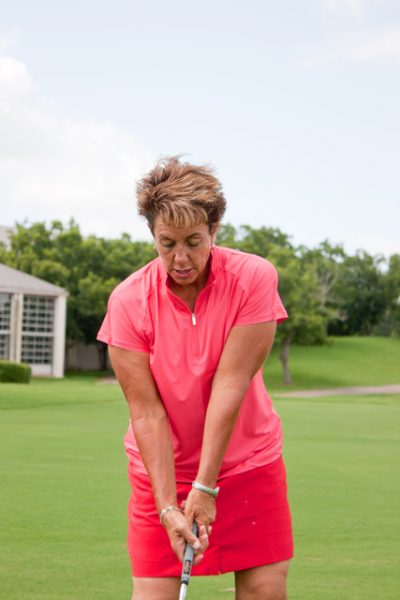
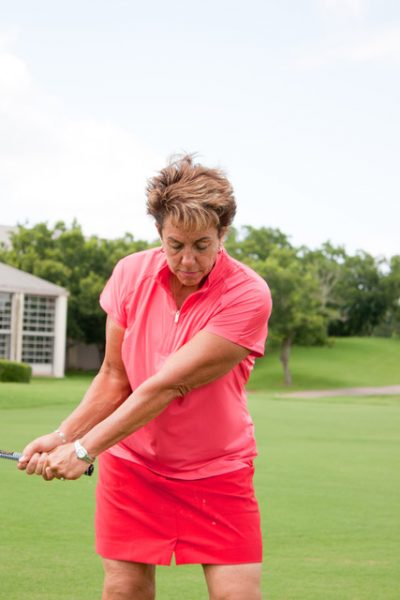
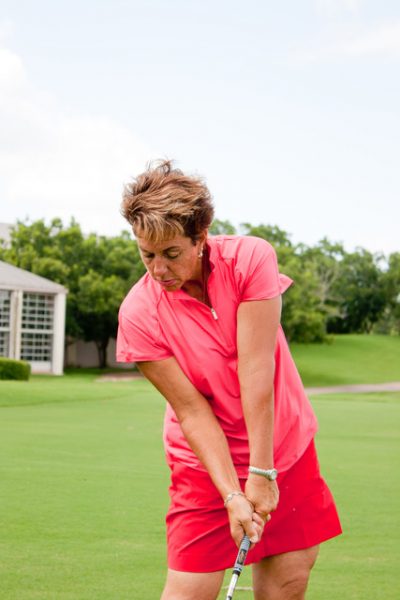
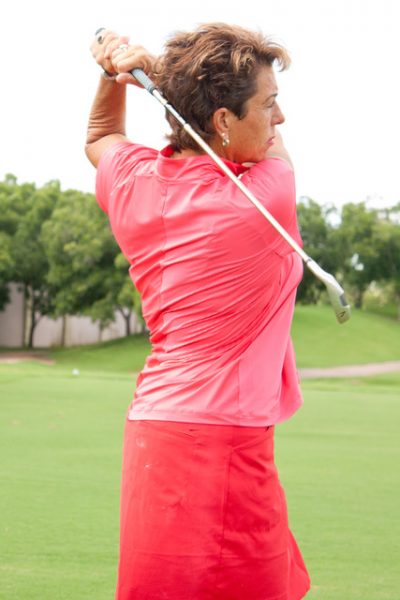









Jesse V
Jul 6, 2019 at 8:44 pm
Due to back issues I have had to learn a different way to swing a club.
I found Jimmy Ballard who’s teachings allow for the shifting of weight in the back swing and of course the shifting of weight forward in the down swing. Has made a tremendous difference in how my back feels after a range session or after a round.
L
Jul 5, 2019 at 9:37 pm
Eldrick is a liar.
If he was able to use the ground better he wouldn’t have a broken back. Eldrick swings all upper body. He has no idea how a golf swing really works. Sam Snead did. Lee Trevino did. They actually used their lower body. Eldrick used to get his lower body out of the way with an upper body twist.
Travis
Jul 6, 2019 at 9:11 pm
The above post might be the worst take on golf that simultaneously lacks any basis in reality. You completely lack an understanding of swing mechanics. Have fun breaking 100.
W
Jul 8, 2019 at 2:58 am
Broke 70 today she enjoyed the 69
Patricknorm
Jul 8, 2019 at 4:58 am
Tiger didn’t hurt his back from golf. Tiger hurt his back training with and for the Navy Seals. Ironically, Tiger lower back became worse when his Achilles and knee issues became pretty well useless. I’ve had exactly the same issues as Tiger regarding my knees, hips and then lower back. The more I’m able to use my legs, bend my knees the less stress on my lower back. Maybe have a look at Matthew Wollf’s swing to see how he uses the ground to increase his swing speed.
Plus, I think a comprehensive physics course would help you better understand what Tiger was referencing.
Jim
Jul 8, 2019 at 2:46 pm
That’s bull. He got the celebrity visit.
He did however pack (buy) 30lbs of muscle into that skinny frame in one winter – years before his specwar days.
Earl was a Green Beret & they would’ve given him a warm welcome and then run him ragged.
He did nothing BUDS
geohogan
Jul 8, 2019 at 5:10 pm
Maybe have a look at Matthew Wollf’s swing to see how he uses the ground to increase his swing speed.
Yes have a look. Wollf jumps all over the place at impact.
his left foot slides backwards, which prevents damage to his left knee and spine. If he posted on a straight left leg as Tiger once did
and /or kept his left foot flat, his lower back would be toast.
FYI, the only solid connection between the lower body and upper body is in the pelvic basin.
How many HP are you going to transmit through that connection before damage is done. In some, its permanent.
The only physics we need to understgand, is Newtons Third Law:
For every action there is an equal and opposite reaction force.
When the force created in upper body isnt supported properly by lower body, damage will be done to the weakest point(where lower and upper body are joined.. the spine).
James Awad
Jul 8, 2019 at 2:40 pm
That ridiculous squat move the big brains & biggest mouths on wrx don’t understand – IS WHAT ATE HIS BACK!
historically many great players have described ‘what they did’ as they thought they were – but video shows otherwise.
Jack once said he ‘started his downswing by stomping his left heel down’….I tried it & almost broke my back…same month he ‘corrected himself’ and said he ACTUALLY shifted (drove off) from the right foot FIRST and that inertia started the upper body and arms (torso) to return to center THUS STOMPING THE LEFT HEEL DOWN – AT WHICH POINT THE UNWINDING OF THE LEFT HIP (not the right sided squat & unwind like Tiger) “was what he meant was being the official ‘start’ of the downswing.
I was discussing the derotational shear forces he was putting on his back with Butch & stood right next to him at his Vegas HQ when he told him ‘Son, that’s going to kill your back’
Tiger NEVER drove from the ‘ground up’
He squeezed his hips out from under his head like toothpaste out of a tube by crunching down – then unwinding huge – but the stress on the discs was NOT spread over a ‘greater range of motion’ ala Jimmy Balard
The best part of his swing – was the set up and huge ‘LEVEL’ LEFT SIDED TURN – ALLOWING His head to move to the right and maintain the same spine tilt orientation he had at address.
Norman & Els had same move – but shifted their ‘entire being’ back to ‘center’ from the right foot & leg – then unwound from the front hip.
Unwinding from the front after shifting the weight back CREATES centrifugal force, and if done from a good top of backswing position, allows the arms to just drop – not have to be pulled – into the downswing and produces a natural inside out swing WITHOUT having to ‘pull down’…
Yomomma
Jul 5, 2019 at 8:56 pm
To start the downswing simply roll your feet and roll your arms.
geohogan
Jul 5, 2019 at 4:42 pm
” Its old time golf wisdom and its wrong.”
Tiger fired his lower body to detriment of his knee and spine.
Upper body firing is also old time golf misconception.
It is momentum beginning with the feet and ground, that begins the kinematic chain and it is properly sequenced deceleration of proximal to distal that results in acceleration of the clubhead.
Only when shoulder joints, elbow joints and wrist joints act as free swinging hinges does the multiplication of force result; NOt power hinges.
A critical distinction.
PSG
Jul 5, 2019 at 3:36 pm
A common myth that hurts a lot of players. 76% of the power in the golf swing comes from shoulder turn, the right elbow unbending, and the wrists firing at the proper time.
If your article was true nobody could hit it 300 yards on their knees. But they can. Because the vast majority of power comes from the upper, not lower, body.
The issue is that everyone *feels* like it comes from the lower body because it doesn’t come from your upper body’s muscles, it comes from your upper bodies joints. This is a critical distinction. You are not hitting with your biceps and lats, you are hitting with your shoulder ball-and-socket joints and elbow joint.
Nonetheless, the hips add about 8 mph and a forward weight drive can get up to around 14 mph. The rest comes from above the waist. You can put your lower body in concrete and hit 110 on trackman. Try doing that without your upper body firing. You’d be lucky to break 50.
Stop. telling. people. this. nonsense. Its old time golf wisdom and its wrong.
JCGolf
Jul 5, 2019 at 7:16 pm
You are right and also not right at the same time. A swing from the knees also results in the hips rotating a decent amount, it just removes the lateral component of the swing and removes the requirement for a strong legs because the plane is extremely flat so there is hardly any upward/downward force and the force is transmitted through your rigid femurs rather than knees/quads/hamstrings.
The best players in the world have 70% of their ground pressure on the front foot before the downswing even begins. From there it is an upper body unwind, much like a baseball swing and the legs react to the force generated above, rather than the legs driving the movement. All the lower body does is stabilize the movement. On your knees the legs cant do much, but the force goes through the femurs.
Sean M
Jul 8, 2019 at 2:48 pm
This lower body myth has to end. Distance comes from speed. And speed is generated from the upper body. Tiger Woods and my grandmother have the same lower body speed.